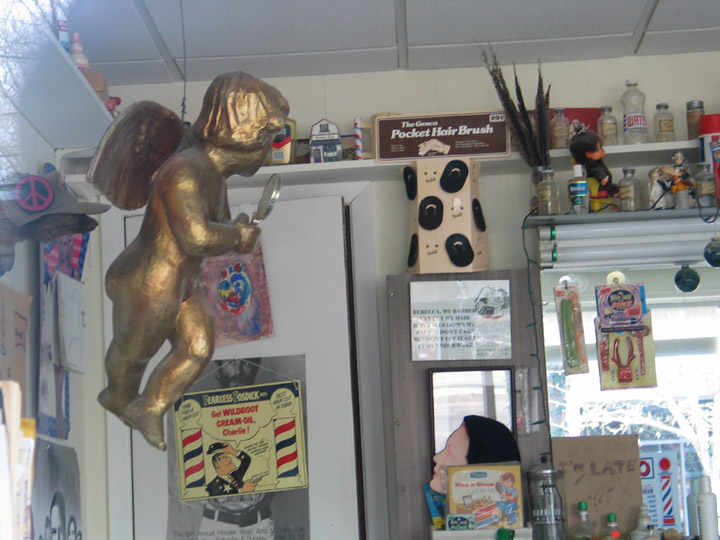
Ozu movies
I have been going to Ozu movies for more than thirty years now. When the first selective retrospective was mounted at the Museum of Modern Art, in the mid-sixties, I attended as often as I could. It was something of a revelation, combining the satisfaction of discovering a new cache of Jane Austen novels with a cleansing visit to a Buddhist retreat. Inevitably, there developed a snobbish, clique sentiment around Ozu, equivalent to being in the vanguard of Monteverdi lovers. Later, the word spread, and there were fuller retrospectives mounted at revival houses and museums, where one could catch up with obscurities like The Toda Brothers and Sisters. I remember arranging a first date at The Only Son, a rather austere early sound picture by Ozu, shown at the late Gallery of Modern Art on Columbus Circle. It was a test: if the woman liked it, I was infatuated; if not, sayonara. She loved it, and, though we were incompatible in most other ways, we ended up messily entangled for seven years. I blame Ozu.
Michael Moore
Michael Moore's Roger and Me (1989) promises at first to be a model essay-film. The filmmaker sets up, in the first twenty minutes, a very strong, beguiling autobiographical narrator: we see his parents, the town where he grew up, his misadventures in San Francisco cappuccino bars. Then, disappointingly, Moore phases out the personal side of his narrator, making way for a cast of 'colorful' interviewees: the rabbit lady, the evicting sheriff, the mystic ex-feminist, the apologist for General Motors. True, he inserts a recurring motif of himself trying to confront Roger Smith, GM's chairman, but this faux-naif suspense structure becomes too mechanically farcical, and in any case none of these subsequent appearances deepen out sense of Moore's character or mind.
It is as though the filmmaker hooked us by offering himself as bait in order to draw us into his anticorporate capitalist sermon. The factual distortions of Roger and Me, its cavalier manipulations of documentary verisimilitude in the service of political polemic, have been analyzed at great length. I still find the film winning, up to a point, and do not so much mind its 'unfairness' to the truth (especially as the national news media regularly distort in the other direction) as I do its abandonment of what had seemed a very promising essay-film. Yet perhaps the two are related: Moore's decision to fade out his subjective, personal 'Michael' seems to coincide with his desire to have his version of the Flint, Michigan, story accepted as objective truth.
Antonioni
My own disappointment with Antonioni came later with Blow-Up, though that derived partly from a misunderstanding, having wrongly elevated him to the level of philosopher in the first place. I had followed the lead of the press, which trumpeted his every quote as a weighty prounouncement: "Eroticism the Disease of the Age: Antonioni." Even his interview silences were reported as evidence of deep thought. It was partly the burden placed on Antonioni to be the oracle of modernity that forced him into ever more schematic conceptions. When his subsequent films exhibited signs of trendy jet-setting, hippie naivete, and sheer whooly-headedness-even if the visuals remained stunning-I, like many of his fans, felt betrayed. It took me years to figure out that most film directors are not systematic thinkers but artistic opportunists. Maybe thanks to Coppola, Cimino & Company, we have reached a more realistic expectation of directors today; we are more used to the combination of great visual style with intellectual incoherence. But at the time we looked to filmmakers to be our novelists, our sages.
Rational Versus Irrational In Film
Even when a great cinematic stylist like Welles tries his hand at an essay-film, the visuals are nowhere near as interesting as those in his narrative features. F for Fake suffers from too much Francois Reichenbach, who shot most of its documentary material, and Filming 'Othello' is a conventional-looking, talking-heads production made for German television. Marker employs a visual style that is notationally engaging and decentered (and occasionally even mournfully beautiful, as in Le Joli Mai, when he had the budget for better cameramen); but for the most part, his visuals lack the syntactical rigor and elegance of his language. Arlyck's texts have considerable complexity and charm, but his visuals remain only one cut above the usual neutral documentary or hand-held cinema-verite. It is almost as though when the part of the brain that commands a sophisticated rational discourse springs into action, the visual imagination becomes sluggish, passive and less demanding.
Here it might be argued by some that the power of cinematic images springs from the unconscious mind, not from rational thought processes-that you need access to the irrational, the dreamscape, to make visually resonant films. I wonder. So much of film theory is prejudiced in favor of the oneiric that I doubt if I have the courage to take on these biases. All I know is that many of the film images that move me most reflect a detachment, serenity or philosophical resignation toward the weakened world that I can only think of as rational. I do not want to sound too dualistic by implying that essays are written only with the rational mind; certainly I am aware in my own writing of tapping into unconscious currents for imagery or passion. But I still say that the rational component predominates in the essay, which is a form par excellence for the display of reasoning and reflection. So too should be the essay-film.
- Totally, Tenderly, Tragically: Essays and Criticism from a Lifelong Love Affair With the Movies
- The Art of the Personal Essay: An Anthology from the Classical Era to the Present